I am trying to get an electret microphone working with my Raspberry Pi Pico's ADC pin. I am trying to detect the output by passing it through a transistor.
I have a 4.5V voltage source. I split this with a voltage divider to create a 3V input for the microphone (labelled V1 on the diagram.) I then pass this point as the base of a transistor.
I set a resistor at the transistor's emitter to fix the current over the transistor. I placed a resistor at the transistor's collector which - with the current provided by the transistor - should set a voltage at the collector.
The ADC is connected to the collector.
The circuit diagram is here:
The circuit values are:
- R1=2.2k
- R2=1k
- R3=100
- R4=220
The transistor is NPN. The emitter is connected to ground over R4.
Electret microphone datasheet.
A few things are happening which seem to indicate there's something Im misunderstanding:
- The voltage powering the microphone is about 0.75V. This is different to the voltage divider's output when it is independent.
- The output at the transistor's collector is 4.5V (source voltage.) That's not what I expected. Itcould be for the same reason as (1.)
I've tried varying all the resistors, but that didn't change (1) or (2).
I'm not sure why the electret is altering the voltage divider provided voltage from 3V to 0.75V so that leads me to the title question:
What sets the voltage drop over an electret microphone?
Input on any other issue with my design, with an explanation, would be appreciated.
Note on capacitor at Vb:
I have seen multiple diagrams online showing a capacitor to remove the DC offset at Vb. I don't have a capacitor to use currently, and to my reasoning - as I am setting the ADC voltage based on the current through the transistor, which is determined by the change in voltage at Vb, this should be independent of the DC offset at Vb.
Again, if there seems to be an issue with my reasoning here, please do comment on it.




